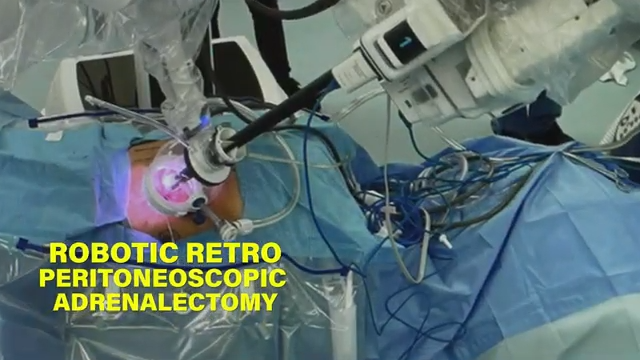COLUMBUS, Ohio (Ivanhoe Newswire) – More than 10 million Americans suffer from lymphedema, extreme swelling of the limbs. Now, new research could shed light on lower limb lymphedema after cancer treatment. Leg lymphedema.
It’s been called cancer’s “nasty little secret.” Lymphedema is a condition where fluid builds up in a person’s arms or leg. Often, it’s a result of damage to the lymph nodes or lymphatic system after cancer surgery, chemo, or radiation. Now, new research assesses the life-altering changes in lower limbs of older cancer survivors.
Sixty-four-year-old Sandy Mustard beat cervical cancer in 2005 but she wasn’t prepared for the chronic health problems that started years later, suddenly after a hike.
“My left leg was very swollen from the ankle up to about my knee,” Mustard recalls.
That was the start of years of lymphedema – painful swelling and dangerous skin infections.
Mustard says, “They told me there’s no cure for lymphedema.”
Professor in the Department of Medicine and the Division of Cancer Prevention and Control at The Ohio State University, Electra Paskett, PhD, knows first-hand. Professor Paskett is a three-time cancer survivor.
“My youngest was two years old when it was found on just a routine mammogram,” Professor Paskett says.
Professor Paskett developed lymphedema in her arm. Now, she focuses her research on survivors of other cancers.
“Lymphedema of the lower extremities is extremely understudied,” Professor Paskett explains to Ivanhoe.
Professor Paskett found that more than 30 percent of ovarian, endometrial, and colorectal cancer survivors develop leg lymphedema. The researchers found these survivors have reduced function. Many can’t walk, stand, or drive a car.
Professor Paskett says, “If they’re not able to get up and move around, then that severely impacts their health.”
Sandy Mustard wears a compression stocking to control the swelling and had specialized surgeries to reduce the size of her leg. After years of struggling with the condition, she can kneel and work in her flower garden.
“Now, I can continue to do that – stand on my legs for a long period of time,” Mustard emphasizes.
Professor Paskett says cancer survivors are always at risk for developing lymphedema. The women in the study developed the condition between one and a half years to 20 years after they were diagnosed with cancer. Professor Paskett says the research emphasizes the importance of regular assessment of lower extremity lymphedema in older survivors. That’s not currently part of the national clinical practice guidelines.
Contributors to this news report include: Cyndy McGrath, Producer; Kirk Manson, Videographer; Roque Correa, Editor.
To receive a free weekly e-mail on medical breakthroughs from Ivanhoe, sign up at: http://www.ivanhoe.com/ftk
Sources:
JAMA Network Open
MEDICAL BREAKTHROUGHS
RESEARCH SUMMARY
TOPIC: LEG LYMPHEDEMA: CANCER’S NASTY LITTLE SECRET
REPORT: MB #5076
BACKGROUND: Lymphedema occurs when the lymph system is damaged or blocked. Fluid builds up in soft body tissues and causes swelling. It is a common problem that may be caused by cancer and cancer treatment. Lymphedema usually affects an arm or leg, but it can also affect other parts of the body. Lymphedema can cause long-term physical, psychological, and social problems for patients. The parts of the lymph system that play a direct part in lymphedema include the following: lymph, or colorless, watery fluid that travels through the lymph vessels and carries T and B lymphocytes. Lymphocytes are a type of white blood cell. Lymph vessels: a network of thin tubes that collect lymph from different parts of the body and return it to the bloodstream. Lymph nodes: small, bean-shaped structures that filter lymph and store white blood cells that help fight infection and disease. Lymph nodes are found along a network of lymph vessels throughout the body. Groups of lymph nodes are found in the neck, underarm, mediastinum, abdomen, pelvis, and groin. The spleen, thymus, tonsils, and bone marrow are also part of the lymph system but do not play a direct part in lymphedema.
(Source: https://www.cancer.gov/about-cancer/treatment/sideeffects/lymphedema/lymphedema-pdq#:~:text=Lymphedema%20is%20the%20build%2Dup,the%20way%20that%20it%20should.)
DIAGNOSING: If you notice any signs of swelling after cancer surgery that involved lymph node removal, contact your healthcare provider right away. At your visit, your provider will do a physical exam to check for swelling. You may be asked to do imaging tests, which are non-invasive. These can help find problems with your lymphatic system. Imaging tests may include: Lymphoscintigraphy tests for lymphatic system abnormalities in the lymph flow or structure. Doppler ultrasound looks at blood flow and pressure by bouncing high-frequency sound waves (ultrasound) off red blood cells. It can help find obstructions and rule out other possible causes of swelling, like blood clots. Both CTs and MRIs display the size and numbers of lymph nodes which help determine the type of a primary lymphedema. Indocyanine green lymphography (ICG) is a colored dye injected under the skin and taken up by the lymphatics. A special infra-red camera maps out lymphatic function. Lymphography is an imaging technique which allows for visualization of the superficial lymph flow.
(Source: https://my.clevelandclinic.org/health/diseases/8353-lymphedema)
TREATMENT: There’s no cure for lymphedema. Treatment focuses on reducing the swelling and preventing complications. Doctors prescribe medication to reduce that number of infections that lymphedema causes, such as antibiotics. They also recommend therapy to teach you about techniques and equipment that can help reduce lymphedema swelling. Therapies such as exercises, gentle contraction of the muscles in the arm or leg can help move the excess fluid out of the swollen limb, or compression bandages, using low-stretch bandages to wrap the entire limb encourages lymph fluid to flow back toward the trunk of the body. Doctors also have surgical approaches which include lymph node removal, a new drainage path, or removal of fibrous tissue.
(Source: https://www.mayoclinic.org/diseases-conditions/lymphedema/diagnosis-treatment/drc-20374687)
FOR MORE INFORMATION ON THIS REPORT, PLEASE CONTACT:
Amanda Harper
(614) 685-5420
If this story or any other Ivanhoe story has impacted your life or prompted you or someone you know to seek or change treatments, please let us know by contacting Marjorie Bekaert Thomas at mthomas@ivanhoe.com




